Related Research Articles
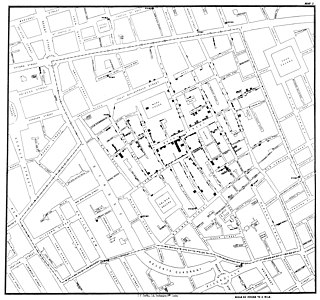
Human geography or anthropogeography is the branch of geography which studies spatial relationships between human communities, cultures, economies, and their interactions with the environment, examples of which include urban sprawl and urban redevelopment. It analyzes spatial interdependencies between social interactions and the environment through qualitative and quantitative methods.
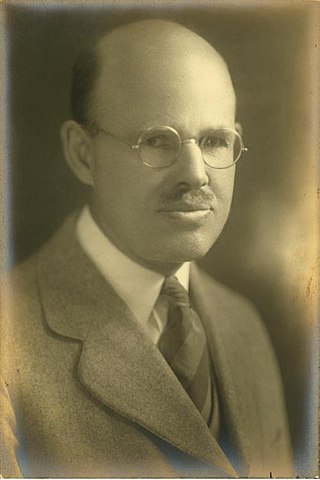
Ellsworth Huntington was a professor of geography at Yale University during the early 20th century, known for his studies on environmental determinism/climatic determinism, economic growth, and economic geography. He served as president of the Ecological Society of America in 1917, the Association of American Geographers in 1923 and president of the board of directors of the American Eugenics Society from 1934 to 1938.
Carl Ortwin Sauer was an American geographer. Sauer was a professor of geography at the University of California at Berkeley from 1923 until becoming professor emeritus in 1957. He has been called "the dean of American historical geography" and he was instrumental in the early development of the geography graduate school at Berkeley. One of his best known works was Agricultural Origins and Dispersals (1952). In 1927, Carl Sauer wrote the article "Recent Developments in Cultural Geography," which considered how cultural landscapes are made up of "the forms superimposed on the physical landscape."
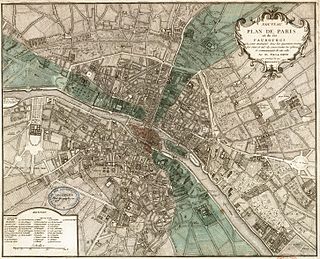
Historical geography is the branch of geography that studies the ways in which geographic phenomena have changed over time. It is a synthesizing discipline which shares both topical and methodological similarities with history, anthropology, ecology, geology, environmental studies, literary studies, and other fields. Although the majority of work in historical geography is considered human geography, the field also encompasses studies of geographic change which are not primarily anthropogenic. Historical geography is often a major component of school and university curricula in geography and social studies. Current research in historical geography is being performed by scholars in more than forty countries.
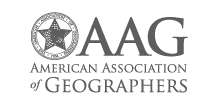
The American Association of Geographers (AAG) is a non-profit scientific and educational society aimed at advancing the understanding, study, and importance of geography and related fields. Its headquarters is located in Washington, D.C. The organization was founded on December 29, 1904, in Philadelphia, as the Association of American Geographers, with the American Society of Professional Geographers later amalgamating into it in December 1948 in Madison, Wisconsin. As of 2020, the association has more than 10,000 members, from nearly 100 countries. AAG members are geographers and related professionals who work in the public, private, and academic sectors.
Samuel M. Dangwa was a Filipino politician.
Cindi Katz, a geographer, is Professor in Environmental Psychology, Earth and Environmental Sciences, American Studies, and Women's Studies at the CUNY Graduate Center. Her work concerns social reproduction and the production of space, place and nature; children and the environment; the consequences of global economic restructuring for everyday life; the privatization of the public environment, the intertwining of memory and history in the geographical imagination, and the intertwined spatialities of homeland and home-based security. She is known for her work on social reproduction and everyday life, research on children's geographies, her intervention on "minor theory", and the notion of counter-topography, which is a means of recognizing the historical and geographical specificities of particular places while inferring their analytic connections to specific material social practices.

Metageography is a term used by Martin W. Lewis and Kären E. Wigen's 1997 The Myth of Continents: A Critique of Metageography, which analyzes metageographical constructs such as "East", "West", "Europe", "Asia", "North" or "South". which they define as "the set of spatial structures through which people order their knowledge of the world" Geographies, wrote one reviewer, are thus much more than just the ways in which societies are stretched across the earth's surface. They also include the "contested, arbitrary, power-laden, and often inconsistent ways in which those structures are represented epistemologically."
Historical regions are geographical regions which, at some point in history, had a cultural, ethnic, linguistic or political basis, regardless of latter-day borders. There are some historical regions that can be considered as "active", for example: Moravia, which is held by the Czech Republic, is both a recognized part of the country as well as a historical region. They are used as delimitations for studying and analysing social development of period-specific cultures without any reference to contemporary political, economic or social organisations.
The fundamental principle underlying this view is that older political and mental structures exist which exercise greater influence on the spatial-social identity of individuals than is understood by the contemporary world, bound to and often blinded by its own worldview - e.g. the focus on the nation-state.

A continent is any of several large geographical regions. Continents are generally identified by convention rather than any strict criteria. A continent could be a single landmass or a part of a very large landmass, as in the case of Asia or Europe. Due to this, the number of continents varies; up to seven or as few as four geographical regions are commonly regarded as continents. Most English-speaking countries recognize seven regions as continents. In order from largest to smallest in area, these seven regions are Asia, Africa, North America, South America, Antarctica, Europe, and Australia. Different variations with fewer continents merge some of these regions; examples of this are merging North America and South America into America, Asia and Europe into Eurasia, and Africa, Asia, and Europe into Afro-Eurasia.
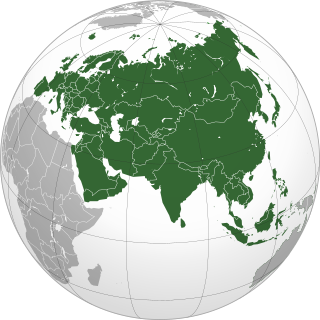
Eurasia is the largest continental area on Earth, comprising all of Europe and Asia. According to some geographers, physiographically, Eurasia is a single continent. The concepts of Europe and Asia as distinct continents date back to antiquity, but their borders have historically been subject to change, for example to the ancient Greeks Asia originally included Africa but they classified Europe as separate land. Eurasia is connected to Africa at the Suez Canal, and the two are sometimes combined to describe the largest contiguous landmass on Earth, Afro-Eurasia.
Andrew Sluyter is an American social scientist who currently teaches as a professor in the Geography and Anthropology Department of the Louisiana State University in Baton Rouge. His interests are the environmental history and historical, cultural, and political ecology of the colonization of the Americas. He has made various contributions to the theorization of colonialism and landscape, the critique of neo-environmental determinism, to understanding pre-colonial and colonial agriculture and environmental change in Mexico, to revealing African contributions to establishing cattle ranching in the Americas, and to the historical geographies of Hispanics and Latinos in New Orleans. With the publication of Black Ranching Frontiers: African Cattle Herders of the Atlantic World, 1500–1900 and a 2012–13 Digital Innovation Fellowship from the American Council of Learned Societies, he has joined a growing number of scholars from multiple disciplines working from the perspective of Atlantic History and using the tools of the Digital Humanities. His latest book, Hispanic and Latino New Orleans: Immigration and Identity since the Eighteenth Century, co-authored with Case Watkins, James Chaney, and Annie M. Gibson, was awarded the 2015 John Brinckerhoff Jackson Book Prize by the American Association of Geographers.
Kären Esther Wigen is an American historian, geographer, author and educator. She is the Frances and Charles Field Professor of history at Stanford University.

Ecomodernism is an environmental philosophy which argues that technological development can protect nature and improve human wellbeing through eco-economic decoupling, i.e., by separating economic growth from environmental impacts.

Susan Lynn Cutter is an American geographer and disaster researcher who is a Carolina Distinguished Professor of Geography and director of the Hazards and Vulnerability Research Institute at the University of South Carolina. She is the author or editor of many books on disasters and disaster recovery. Her areas of expertise include the factors that make people and places susceptible to disasters, how people recover from disasters, and how to map disasters and disaster hazards. She chaired a committee of the National Research Council that in 2012 recommended more open data in disaster-monitoring systems, more research into disaster-resistant building techniques, and a greater emphasis on the ability of communities to recover from future disasters.

The beech argument is a now mostly outdated argument in Indo-European studies that is in favour of placing the Indo-European urheimat in an area west of a line connecting Kaliningrad and the Black Sea, based on the current distribution of beech trees. The argument, as summarised by Friedrich and Mallory goes that the Indo-European term *bʰāg(ó) most probably refers to the beech tree. Hence the presence of descendants of the term *bʰāg(ó) in Italic, Germanic, Albanian, Greek and (Indo-)Iranian, and potentially Celtic, Slavic, and Baltic, indicates that this word belonged to the most widely-spoken Indo-European language. And thirdly that since the beech tree distribution was limited historically to the regions west of the Eurasian Steppe, this is where this language was spoken.
Asya Pereltsvaig is a Russian-American linguist, writer, and educator.

The second law of geography, according to Waldo Tobler, is "the phenomenon external to a geographic area of interest affects what goes on inside." This is an extension of his first. He first published it in 1999 in reply to a paper titled "Linear pycnophylactic reallocation comment on a paper by D. Martin" and then again in response to criticism of his first law of geography titled "On the First Law of Geography: A Reply." Much of this criticism was centered on the question of if laws were meaningful in geography or any of the social sciences. In this document, Tobler proposed his second law while recognizing others have proposed other concepts to fill the role of 2nd law. Tobler asserted that this phenomenon is common enough to warrant the title of 2nd law of geography. Unlike Tobler's first law of geography, which is relatively well accepted among geographers, there are a few contenders for the title of the second law of geography. Tobler's second law of geography is less well known but still has profound implications for geography and spatial analysis.

The Myth of Continents: A Critique of Metageography is a book by American geographer Martin W. Lewis and historian Kären E. Wigen. It was published in 1997 by the University of California Press.
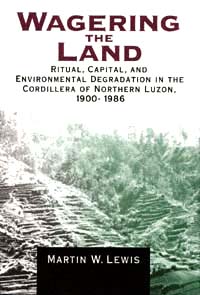
Wagering the Land: Ritual, Capital, and Environmental Degradation in the Cordillera of Northern Luzon, 1900–1986 is a book by Martin W. Lewis. It was published in 1991 by the University of California Press.
References
- ↑ "Martin Lewis on Geography". Entitled Opinions. November 9, 2011.
- ↑ "Martin Lewis | Department of History". history.stanford.edu. Retrieved 2024-01-07.
- 1 2 "Martin W. Lewis". The Breakthrough Institute. Retrieved 2024-01-07.
- ↑ Martin Lewis: Understanding Current Events Through Geography & Maps , retrieved 2024-01-07
- ↑ "Martin Lewis" . Retrieved 2024-01-07.
- ↑ "Diversity Amid Globalization: World Regions, Environment, Development". www.pearson.com. Retrieved 2024-01-07.
- ↑ Pereltsvaig, Asya; Lewis, Martin W. (2015). The Indo-European Controversy: Facts and Fallacies in Historical Linguistics. Cambridge: Cambridge University Press. ISBN 978-1-107-05453-0.
- ↑ "About The Author Martin W. Lewis GeoCurrents.info". GeoCurrents. Retrieved 2024-01-07.
- ↑ Efferink, Leonhardt van (2010-08-05). "Martin Lewis: Metageographies, postmodernism and fallacy of unit comparability". Exploring Geopolitics. Retrieved 2024-01-07.
- ↑ Goss, Jon (1993). "Reviewed work: Wagering the Land: Ritual, Capital, and Environmental Degradation in the Cordillera of Northern Luzon, Martin W. Lewis". Geographical Review. 83 (2): 217–219. doi:10.2307/215265. JSTOR 215265.
- ↑ Kjaerholm, Lars (March 7, 1993). "Philippines – Wagering the Land: Ritual, Capital and Environmental Degradation in the Cordillera of Northern Luzon, 1900–1986. By Martin W. Lewis. Berkeley, Los Angeles, Oxford: University of California Press, 1992. Pp. xii, 280. Illustrations, Notes, Bibliography, Index". Journal of Southeast Asian Studies. 24 (1): 197–198. doi:10.1017/S0022463400001776. S2CID 242727827 – via Cambridge University Press.
- ↑ "Martin W. Lewis". web.stanford.edu. Retrieved 2024-01-07.
I live in a condominium on the Stanford campus with my wife, Karen Wigen (Professor of Japanese History), our children, Evan and Eleanor, my elderly mother, Nell Lewis, and our two cats, Midnight and Sunshine.